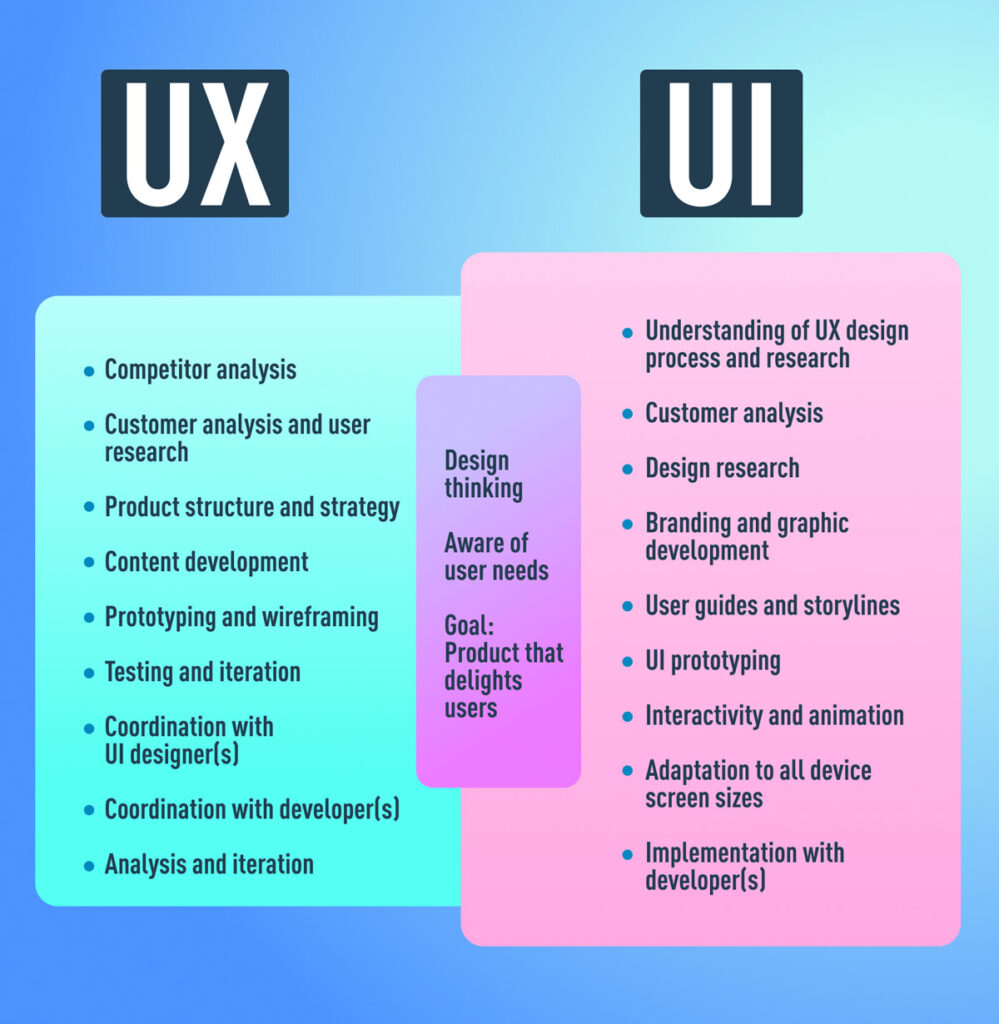In the realm of digital design, User Experience (UX) and User Interface (UI) are often used interchangeably, leading to confusion about their distinct roles and contributions. While both disciplines are integral to creating exceptional digital products, they serve distinct purposes and require different skill sets. In this blog post, we’ll unravel the differences between UX and UI design and explore how they work together to deliver seamless user experiences.
What is UX Design?
User Experience (UX) design focuses on enhancing the overall experience users have when interacting with a product or service. It encompasses every aspect of the user’s journey, from their initial impression to their ongoing engagement and satisfaction. UX designers strive to understand users’ needs, behaviors, and pain points through research, analysis, and empathy.
Key Responsibilities of UX Designers:
- User Research: Conducting research to understand users’ goals, preferences, and pain points.
- Information Architecture: Structuring and organizing content in a logical and intuitive manner.
- Wireframing and Prototyping: Creating low-fidelity wireframes and interactive prototypes to visualize the user flow and functionality.
- Usability Testing: Testing prototypes with real users to gather feedback and identify usability issues.
- Iterative Improvement: Continuously refining and optimizing the user experience based on feedback and insights.
What is UI Design?
User Interface (UI) design focuses on the visual and interactive elements of a product that users directly interact with. It involves creating aesthetically pleasing interfaces that are intuitive, accessible, and user-friendly. UI designers are responsible for designing everything users see and interact with on the screen, from buttons and icons to color schemes and typography.
Key Responsibilities of UI Designers:
- Visual Design: Creating visually appealing interfaces that reflect the brand’s identity and values.
- Typography and Iconography: Choosing fonts and icons that enhance readability and convey meaning.
- Layout and Composition: Designing layouts that optimize user flow and hierarchy of information.
- Interaction Design: Designing interactive elements such as buttons, forms, and animations to provide feedback and guidance to users.
- Prototyping and Testing: Creating high-fidelity prototypes to simulate the final product and testing the usability of UI elements.
Key Differences between UX and UI Design:
- Focus: UX design focuses on the overall experience and usability of the product, while UI design focuses on the visual and interactive aspects.
- Scope: UX design encompasses the entire user journey, from discovery to conversion, while UI design focuses specifically on the interface elements users interact with.
- Skills: UX designers require skills in research, analysis, and psychology, while UI designers need skills in visual design, typography, and interaction design.
- Tools: UX designers often use tools like wireframing software, user testing platforms, and analytics tools, while UI designers use graphic design software, prototyping tools, and animation software.
Synergy between UX and UI Design:
While UX and UI design are distinct disciplines, they are inherently interconnected and complementary. A seamless user experience requires both effective UX and visually appealing UI. UX research informs UI design decisions, ensuring that visual elements are aligned with user needs and preferences. Similarly, UI design enhances the usability and accessibility of the product, reinforcing the overall user experience.
In conclusion, UX and UI design are two sides of the same coin, working together to create compelling digital experiences. By understanding the differences and synergies between UX and UI design, businesses can develop products that not only meet user needs but also delight and engage users at every touchpoint.

Hi, this is a comment.
To get started with moderating, editing, and deleting comments, please visit the Comments screen in the dashboard.
Commenter avatars come from Gravatar.